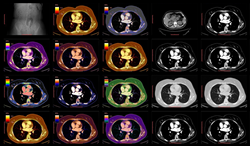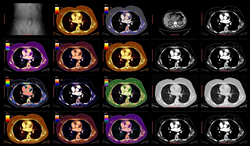
A new system from Draper uses artificial intelligence to improve the predictability of CT scans to detect and diagnose lung cancer. (Credit: Shutterstock.)
“Draper is developing a way to use AI and deep learning to improve detection and diagnosis of lung cancer by creating AI systems that work in concert with radiologists to focus attention on difficult-to-find lesions that otherwise might be missed,” said Andrew Berlin at Draper.
CAMBRIDGE, Mass. (PRWEB)
January 27, 2020
An estimated 228,150 Americans are diagnosed with lung cancer every year—one every four minutes—making it one of the most common cancers. It also one of the deadliest cancers. The high mortality rate associated with lung cancer is in part because its symptoms become apparent only after the cancer is already at an advanced stage.
Andrew Berlin at Draper believes artificial intelligence may be the solution to improving those odds. “CT screening has the potential to dramatically reduce the number of cancer-related deaths, but radiologists are eager to minimize the ambiguity in screening for cancer as they work through large volumes of CT scans,” Berlin said. “Draper is developing a way to use AI and deep learning to improve detection and diagnosis of lung cancer by creating AI systems that work in concert with radiologists to focus attention on difficult-to-find lesions that otherwise might be missed.”
Berlin works on a team that specializes in an area of data science that uses artificial intelligence and machine learning to improve clinical decision-making in healthcare and other fields. Today a radiologist might use AI software to look through hundreds of 2D images within a single CT scan to spot cancer. But without a built-in way to identify high priority cases and suspicious regions of the scans, the software may not provide as much support as it could.
“While today’s AI software is often able to identify suspicious findings on images, systems that provide a confidence estimate in their conclusions are very rare,” Berlin said. “This leaves the physicians uncertain when to trust the software—is it certain that a lesion is suspicious, or is it unclear and the software is just making its best guess.”
With his Draper colleagues, Berlin designed a new computer-aided detection and diagnosis system for lung cancer screening with low-dose CT scans that not only detects suspicious regions, but also provides the physician with a confidence level in those detection results. The system operates by using a 3D convolutional neural network (CNN) that has been modified to not only classify which regions of a scan look suspicious, but also to calculate how confident the neural network is in its conclusions.
Rebecca Russell, a machine learning scientist at Draper, co-wrote a research paper on the topic with Berlin and Onur Ozdemir. She says that “while lung cancer nodule detection systems are typically designed and optimized on their own, we find that it is important to consider the coupling between detection and diagnosis components. This is the first system to provide not just a diagnosis, but also a measure of confidence in that diagnosis. The measure of confidence has been statistically validated.”
In the future, the authors would like to use visual data displays and biomarkers to help radiologists better understand and interpret computer-aided detection (CADe) and computer-aided diagnosis (CADx) results.
Share article on social media or email:

